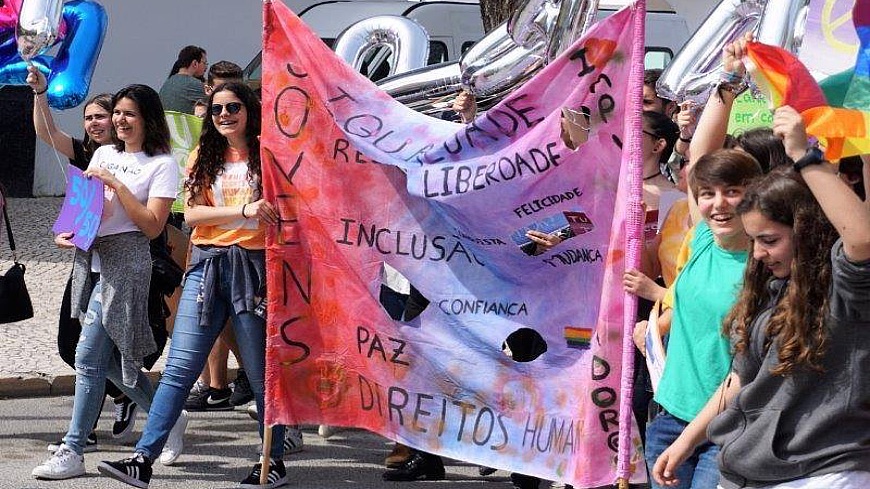From “GIVING” voice to “BEING” the voice
Schools and NGOs working together on prevention of gender violence among young people through participatory action in school contexts
by Ana Morgado
22/04/2020
In the last few years I have been working on various projects where public-sector schools and NGOs have been sharing their enthusiasm, skills and experiences to build around a shared desire to make a difference in young people’s lives and surrounding communities.
Along this path I have encountered public and civil sectors deeply committed to joint resources in achieving social change and opening up more co-operative and humanised ways of doing so, but I have faced many challenges in the way that both sectors perceive education, their roles and approaches towards the voice of young people and their social rights. In these happy and sometimes bumpy relationships I perceive myself as an intermediary who supports the building of trusting relationships amongst NGOs, schools and young students.
This article describes the project Young Boosters of Human Rights and Equality1 promoted by the Portuguese NGO Cooperativa SEIES and implemented in nine public schools in the district of Setúbal and surrounding communities. It also describes the challenges I faced as a youth worker in schools and what NGOs and public schools may face when working together on social rights.
 NGOs and public schools – how we moved forward on co-operating to foster gender equality among young people
NGOs and public schools – how we moved forward on co-operating to foster gender equality among young people
The project Young Boosters of Human Rights and Equality was introduced to nine public schools in the territories of Sesimbra, Setúbal and Palmela, with the intention of strengthening initiatives and real participation of young students between 14 and 18 years of age in their schools and surrounding communities. The approach was through youth initiatives addressing the issues of inequality between girls and boys and tackling violence in intimate relationships, with the aim of primary prevention using participatory strategies based on the principles and values of non-formal education.
Since the project had two contexts of implementation – schools and surrounding communities – it was supported by the three municipalities. They found space for it in schools through a real partnership based on an ecosystemic perspective (all the school community is involved at different levels – students, teachers, families and staff), and by fostering a culture of human rights and equality in different civil activities.
The educational approach chosen had its own “action-based architecture”. It was continuously rethought through co-decision making with the school community – teachers and students especially – combining organisational cultures, specificities and the needs of different schools, young people and localities. This was developed as follows:

Involvement of local clusters of schools and/or secondary schools through partnership agreements. These included the participation of the schools’ head teachers and/or teachers responsible for certain departments with a strong interest in the topics and methodologies of the project. They also involved building a shared vision for the project, having in mind the specific needs of each school or a certain age group.
Establishment of a team of teachers to follow the project continuously in each school throughout the year.
Creation of a group of “Young Boosters for Human Rights and Equality” in each school (on a voluntary basis).
Introductory training on gender equality and violence2 in intimate relationships for all the Young Boosters. The training in every school was run by youth workers and took place during the winter or mid-term holidays. In the last year of the project some schools were open to offering their term times for the training.
Implementation of peer-to-peer workshops run by the various groups of Young Boosters on a theme of their choice in areas of human rights with a focus on gender equality, with second- and third-cycle students.
Selection of a theme and proposal for a local community action (localised, by each youth group). During the three years of the project, students chose a joint inter-school large event, notably a peaceful march in the city of Setúbal, involving all schools (partners or not of the project) and other public and private entities.
Creation of a Dialogue and Co-operation Group which consisted of students, a youth worker and teachers working together on the project, including monitoring and evaluating phases, deciding together and with equal power on the necessary steps of the project.
Design and Implementation of “Youth Participation – A Tool for Learning” workshops for teachers on youth participation and gender equality.
Creation of a “multi-handwritten” handbook (teachers, Young Boosters and Cooperativa SEIES) for teachers, to foster youth initiatives in schools and communities.
Meetings of municipal youth workers and civil servants, with responsibilities in the domain of youth and civil society organisations to share practices and to design joint and localised strategies for the promotion and development of youth participation.
 Open to chaos and valuing all actions intended
Open to chaos and valuing all actions intended
As crucial to the participatory element of this project, I highlight here the foundations of the way we worked on the involvement and empowerment of young people we considered important:
- stakeholders in a region or organisation learn to recognise and value what young people do and the ways they already informally practise and learn citizenship and participation. The approach goes beyond the logic of “giving” voice or “giving” space to young people, projecting the young person into “being” the voice, and knowing and recognising that young people have their own voice and space (often only known and recognised by themselves). We have to work continuously in acknowledging, recognising and interpreting these voices and spaces so that the sense of co-operation and co-responsibility becomes real. This acknowledgement and recognition of “being” the voice allowed us to create a space of interpersonal relationships which moved the individual/group to take actions based on collective motivations, interests and dreams, as well as with a shared sense of empathy and solidarity to create a feeling of “interbeing”;
- sharing of views, concerns and expectations by adults and the young people involved. The sharing of both adult and youth views will allow the development of these concepts (citizenship, participation, equality) and the vision of the results to be achieved;
- promotion of inclusive action – recognising the existence of stereotypes, inequalities and violence. Promoting equality and the opportunity for relationships among adolescents from different social and cultural groups. Creating spaces and comfort zones for learning and changing mental patterns and social normalisation of inequality and violence in intimate relationships;
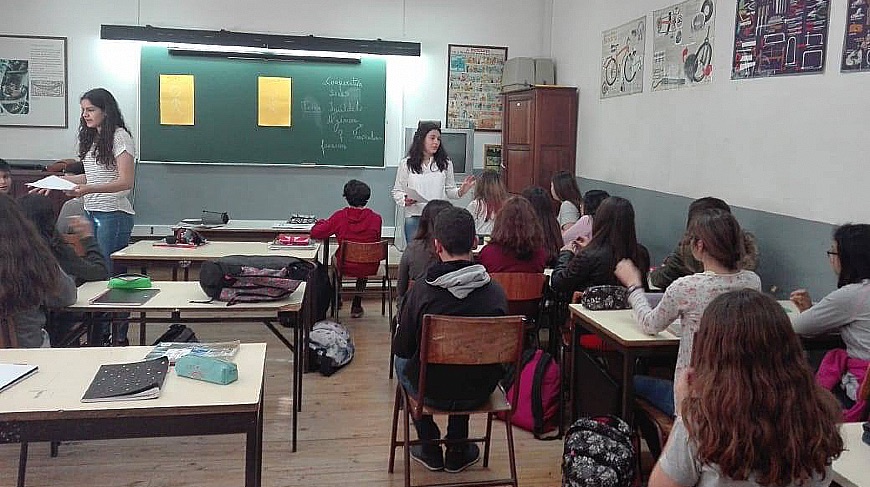
- valuing all actions intended by young people (small, large, local, national, inside and outside the school) and reflecting on their respective viability and consequences involving all the stakeholders;
- openness to chaos, unknowingness and spontaneous “social play”, because youth participation, however much we try to study and organise it, has a strong innate force of a chaotic nature. Likewise, always constituting itself as a learning process that takes different shapes and life from group to group and from context to context;
- recognising school and the project as a space for young people with young people. The desired boundaries are established, respected and negotiated with young people about the involvement of their families in the space of the project;
- establishing relationships of trust between young participants in the project and their peers, thinking collectively about the best ways to prevent and monitor the situations of young peers who experience or are at risk of experiencing violence in intimate relationships;
- educating for action and social transformation – positively contributing/influencing based on the values of equality, justice and solidarity for changing mental and behavioural patterns in families, peer groups, schools and communities.
 An NGO and a youth worker inside schools… sensitiveness was the mantra
An NGO and a youth worker inside schools… sensitiveness was the mantra
Intervention by NGOs with non-formal education has great potential for innovation, but it is limited in direct results due to the number of children and young people we reach. Due to its span and resources, the school, namely the public school, is one of the greatest experiences of education for citizenship of all young people, even when the school does not have a developed strategy of citizenship education, curricular or not.
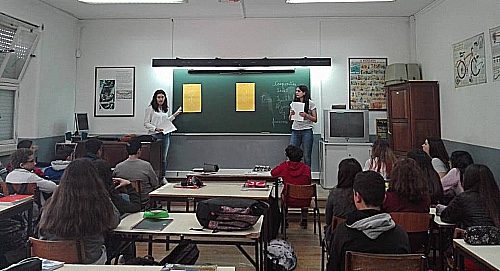
The combined work of NGOs and schools needs results which give the schools experience in non-formal citizenship education activities, pedagogical resources for later use and training of students and teachers from all cycles of education to become multipliers of citizenship and human rights education (sustainability factors).
In my experience as a youth worker in local and European projects in which NGOs and public schools partner on social rights (notably the project Network of Democratic Citizenship Schools promoted by Cooperativa ECOS and the project Schools of Active Citizenship promoted by YUPI – Associação), I would like to list the following elements to consider when working together with schools:
- Nowadays most of us have or had the opportunity to go to school (or have a child that is currently going) and we have all developed an emotional relationship with it. This means that all of us have an opinion on how school should be, how it should work and how it should approach students, teachers and parents. I found it essential to open the space for teachers and students to share their stories in relation to schools before I started to work with them directly.
- Schools have a very different “tempo” from NGOs and hierarchical structures. Having the school decision makers involved since day one and keeping them in the loop is essential to speeding up some of the processes… just some! Trying to compromise and having in mind during the project planning all the school breaks, exam times and the commitments of the teachers and students I was working with was of help!
- It was very important that teachers do not feel under scrutiny. Most teachers, I gathered, felt that some stereotypical or discriminatory comments about topics tackled in their classes were their fault. It was important to create the space to demystify that violence and unbalanced power relations are conveyed through many channels and contexts!
- My training on non-formal education within the framework of TRAYCE (Training of Trainers for Youth in the Council of Europe), together with the opportunities I had to be involved in the ENTER! project, allowed me not only to be able to have a positive influence and a more critical perspective towards the described pedagogical approach of the project, but also to have a greater picture about the situation of social rights in Europe and the political work that needs to be done at local level to advocate for the rights of young people experiencing violence, discrimination and exclusion close to public schools and local authorities.
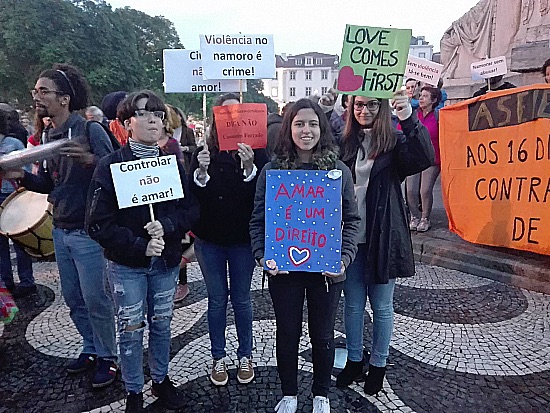
- Here, I would like to emphasise how challenging it can be to bring to organisations, including NGOs, a certain political dimension of the work that needs to be done along with social work that I, as a youth worker, feel is also my responsibility to do. NGOs, especially youth organisations or organisations working with and for young people, implementing projects in partnership with hierarchical, complex and, above all, power structures like schools and municipalities tend to struggle to influence political decisions on these matters. For me, it only reinforces the importance of having young people in all contexts of education deeply informed, involved and empowered to be voices standing for the implementation of public policies that take into consideration their specific needs when it comes to SOCIAL RIGHTS!
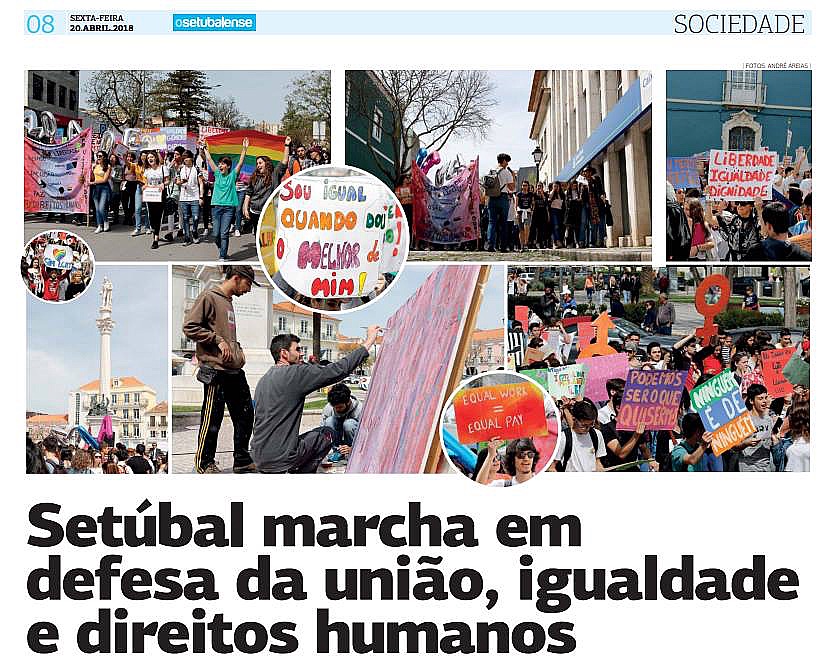
- I found it very difficult to engage teachers in non-planned activities as well as to keep up their motivation when things went in a different direction. The groups for co-operation and dialogue, where they could feel the motivation and commitment of some students as well as the youth worker, were essential!
- Schools receive NGOs with a lot of hope and sometimes NGOs are seen as THE SOLUTION! for certain problems. It was really important to make it clear for everyone the nature of my experience, my personal and professional limitations, the existing resources and the scope and objectives of the project and to keep all this alive throughout the entire project.
- Most of the time schools resist making financial investment in such projects. It is essential to discuss the limitations or opportunities that the financial investment can bring to the results of the project.
- Work with an approach that is neither competitive, substitutive nor parallel. Work together. Sharing leadership from activity to activity was essential to brush away remarks from both sides, such as: “they think they know better” or “they don’t know anything about the way we do things”.
- The results are seen year after year. Creating professional yet informal relationships with interlocutors in schools was very important to allow for certain things to happen. Nothing was done without consent and we tried to make a compromise between the more impetuous wills of young people and at times the more conservative approaches of certain teachers or schools by creating spaces for dialogue and making decisions together.
- I found it quite challenging to picture clearly the boundaries between being a youth worker, and the professional values and approaches it encompasses, and a social worker, especially when it comes to situations related to violence, privacy and dealing with child protection authorities. It is essential to find in teams and organisations a multidisciplinary team that combines approaches in an integrated way.
- To conclude, I would like to share with you that after these experiences of working together with social workers, other youth workers, teachers, students, parents and civil servants to promote more inclusive and equal cultures in school contexts and communities, I firmly believe that equality and participation are learnt through intersecting formal and non-formal educational spaces where they are practised with the use of critical thinking to develop these skills and where there is a strong coherence between the contents, the contexts and the pedagogical strategies adopted.
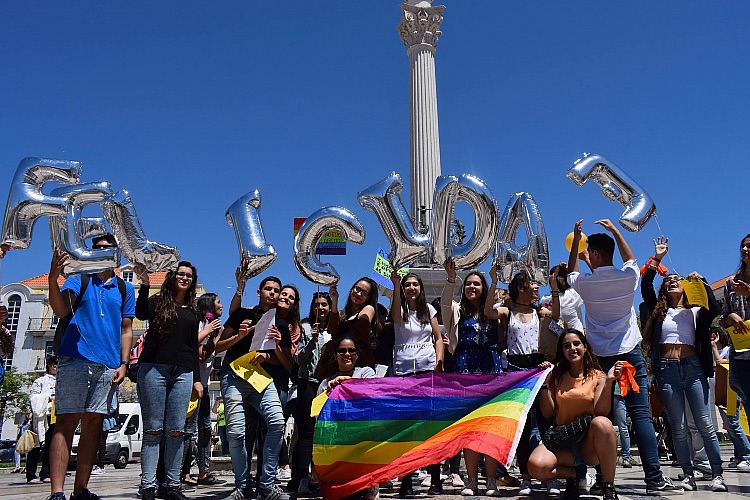
1 The original name of the project in Portuguese is “Jovens Impulsionadoras e Impulsionadores de Direitos Humanos e Igualdade” and the project was funded by the Portuguese Secretary of State for Citizenship and Equality.
2 As manuals for the training, we adapted activities from the following manuals: “Gender matters: a manual on addressing gender-based violence affecting young people”, 2007; Raparigas e Rapazes nas Associações Juvenis: um guia para o mainstreaming de género and “Have your say!”.


